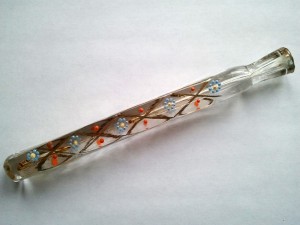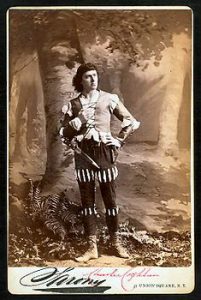 Among the most famous and tantalizing stories to come from the “Ripley’s Believe It or Not” franchise is one that begins with a death at the Tremont House Hotel in Galveston.
Among the most famous and tantalizing stories to come from the “Ripley’s Believe It or Not” franchise is one that begins with a death at the Tremont House Hotel in Galveston.
An Omen
The curious tale began when a young actor named Charles Francis Coghlan visited a gypsy fortuneteller. The mystical soothsayer told Coghlan that he would die at the height of his fame in a southern U. S. city – but that he would have no rest until he returned home.
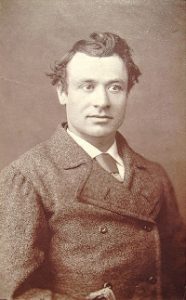 The prediction tormented Coghlan, disturbing him so much that he repeated it to friends and co-workers numberous times in the course of his life.
The prediction tormented Coghlan, disturbing him so much that he repeated it to friends and co-workers numberous times in the course of his life.
Over the next thirty years, Coghlan became one of the most famous actors of his day, appearing on stages across the U.S. and Europe. During the rare weeks that he did not appear on the stage, he and his wife retreated to their beloved home on Canada’s Prince Edward Island.
Fate Enters
On October 30, 1899, Coghlan arrived in Galveston with his performing troupe, ready to present one of his own works,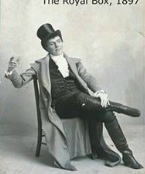 titled “The Royal Box.”
titled “The Royal Box.”
He never had the chance to appear on stage on the island, however. He became seriously ill with what doctors at the time diagnosed as acute gastritis. His understudy, Mr. Robinson, received wonderful reviews often mistakenly credited to Coghlan in print.
The actor’s wife remained with him, transcribing the first four acts of a new play, which he dictated while resting for four weeks. But, after an abrupt relapse of pain, he died in bed at the Tremont Hotel on November 27, with his distraught wife by his side. He was 57 years old and at the peak of his career.
His body was taken to the Levy Brothers Funeral Home, while his wife attempted to make arrangements in a strange city far from family and friends.
The griev ing widow knew that her husband, upon his death, had wanted to be cremated and buried in New York. Galveston did not have a crematorium at the time, so she arranged for her husband’s body to be sh
ing widow knew that her husband, upon his death, had wanted to be cremated and buried in New York. Galveston did not have a crematorium at the time, so she arranged for her husband’s body to be sh
ipped to the nearest facility in St. Louis.
By the time those preparations were made, a flood of demands from family and admirers insisted he be taken immediately to New York. It is no wonder that confusion exists about the final arrangements for the disposition of the actor’s body. Unfortunately, the funeral home records from this time were destroyed in 1979.
Her funds and energy exhausted, Coughlan’s widow had his remains placed in a temporary receiving vault at the Lakeview Cemetery until she could manage to have him sent to New York the following year.
In September of the following year, the infamous 1900 Storm hit Galveston, killing thousands and sweeping coffins out of mausoleums and vaults. Though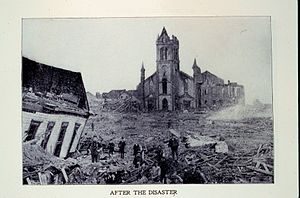 the vault where Coghlan’s body was constructed of heavy granite blocks, it was washed away like so many other structures on the island.
the vault where Coghlan’s body was constructed of heavy granite blocks, it was washed away like so many other structures on the island.
Those coffins that were recovered were reinterred in the cemetery, but many were never found. Coughlan’s casket, which was among the missing, had been caught in the swift-running current and believed to have been swept into the Gulf of Mexico. The New York Actor’s Club offered a sizable reward, but the casket was never located.
Because his widow had purchased an elaborate cast iron casket for her beloved, it is highly unlikely it could do anything but sink in a body of water.
Going Home
In 1929, an edition of “Ripley’s Believe It or Not” published a rumor that had developed in the years after the storm.
The original Ripley feature said: “Charles Coughlan comes home! He died in 1899, and he was buri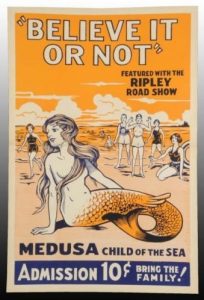 ed in Galveston. When the tragic flood came his coffin was washed out to sea and the Gulf Stream carried his around Florida and up the coast to Prince Edward Island – 2,000 miles distant – where he had lived.”
ed in Galveston. When the tragic flood came his coffin was washed out to sea and the Gulf Stream carried his around Florida and up the coast to Prince Edward Island – 2,000 miles distant – where he had lived.”
Ripley mentioned in October of 1908, fishermen spied a large box floating the Gulf of St. Lawrence. Snagging it with their nets, they pulled the badly damaged object to shore. A silver plate was revealed after cleaning off a few barnacles, which identified it as the casket of Charles Coughlan.
The legend tells that the actor was taken to his home church on Prince Edward Island and buried near the church where he was baptized in 1841. His wandering spirit was finally home.
Truth or Urban Myth?
Numerous books and articles have been written about the incident over the years, with slight to outrageous changes in the details. A brief internet search yields several versions of the story.
Local cemetery records of the small church on Prince Edward are considered to be complete and accurate. They show no sign of Charles Coughlan’s burial, and no gravestone exists.
It was reported that his daughter, actress Gertrude Coughlan Pitou visited Prince Edward in the 1980s and stated that her father’s remains had not been recovered or reinterred in Galveston. This report is seemingly eerie enough, since Gertrude herself died in 1952!
His sister, actress Rose Coughlan, was highly offended by the stories about her brother and she asked Robert Ripley for a retraction. Ripley, ever the savvy businessman, declined. He credited Sir Johnston Forbes Robertson, a Shakespearean actor and friend of Coughlan, for sharing the story with the publication.
The question remains: If Charles Coughlan is not at home at rest, and not in Lakeview Cemetery…where is he?



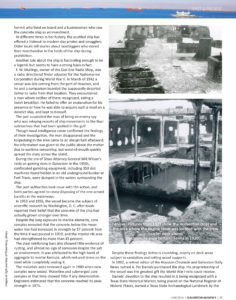



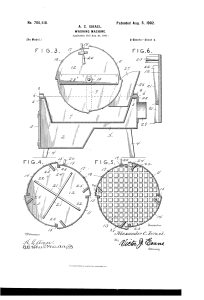
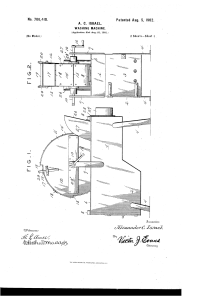 r tearing the same, and the machine is adapted for washing the finest fabrics – lace curtains and the like. The water is kept constantly boiling by the heater and s continuously circulated throughout he revolving drum an brought into contact with the clothes contained therein. The clothes are constantly carried upward and dripped by means of the radially-disposed ribs and are at the same time subjected to the scoring or rubbing action of the rotary washboard.”
r tearing the same, and the machine is adapted for washing the finest fabrics – lace curtains and the like. The water is kept constantly boiling by the heater and s continuously circulated throughout he revolving drum an brought into contact with the clothes contained therein. The clothes are constantly carried upward and dripped by means of the radially-disposed ribs and are at the same time subjected to the scoring or rubbing action of the rotary washboard.” This story has now come full circle, and I got to meet Jan and Eddie in person this week! Eddie even brought me a copy of the undertaker’s bill for Alexander’s funeral. Though the spelling is a bit amusing, once you realize that the funeral cost was quite high for the time it becomes clear that the family probably couldn’t also afford to have his side of the gravestone engraved at the same time.
This story has now come full circle, and I got to meet Jan and Eddie in person this week! Eddie even brought me a copy of the undertaker’s bill for Alexander’s funeral. Though the spelling is a bit amusing, once you realize that the funeral cost was quite high for the time it becomes clear that the family probably couldn’t also afford to have his side of the gravestone engraved at the same time.

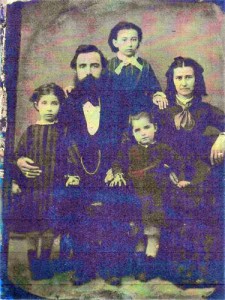
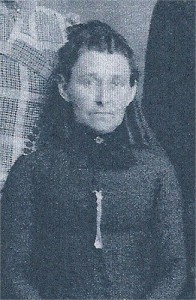
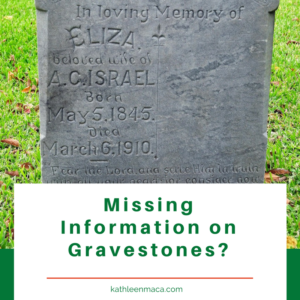

 ng holidays, we are surrounded by symbols of harvest and bounty. One of the most popular symbols of the season’s bounty is a sheaf of wheat, which is why it is often incorporated into decorations.
ng holidays, we are surrounded by symbols of harvest and bounty. One of the most popular symbols of the season’s bounty is a sheaf of wheat, which is why it is often incorporated into decorations.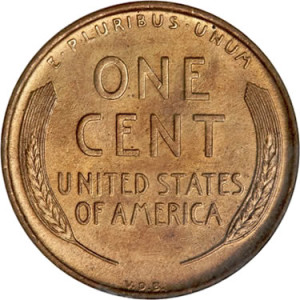 The image is so connected with bounty and prosperity that it was at one time used on United States currency.
The image is so connected with bounty and prosperity that it was at one time used on United States currency. Eucharist, a motif of everlasting life through belief in Jesus. Therefore when wheat is used on gravestones or memento mori, it represents a divine harvest – being cut to resurrect the “harvest” into everlasting life or immortality.
Eucharist, a motif of everlasting life through belief in Jesus. Therefore when wheat is used on gravestones or memento mori, it represents a divine harvest – being cut to resurrect the “harvest” into everlasting life or immortality.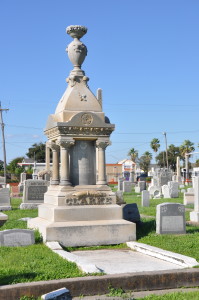 The wheat sheaf can also signify a long and fruitful life, often more than 70 years.
The wheat sheaf can also signify a long and fruitful life, often more than 70 years.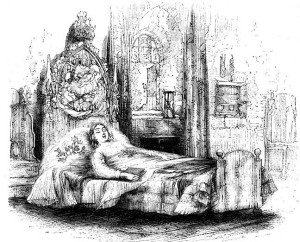 Folklore and customs concerning death and cemeteries can run from humorous to gruesome, and are almost always entertaining. Most of us have heard it’s bad luck to walk across a grave or speak ill of the dead, but if you didn’t know that collecting epitaphs could cause you to lose your memory perhaps you should read on…just in case!
Folklore and customs concerning death and cemeteries can run from humorous to gruesome, and are almost always entertaining. Most of us have heard it’s bad luck to walk across a grave or speak ill of the dead, but if you didn’t know that collecting epitaphs could cause you to lose your memory perhaps you should read on…just in case!
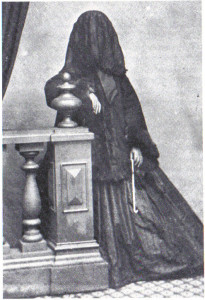
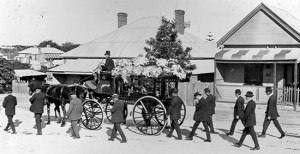
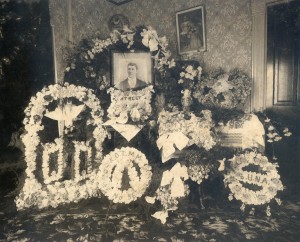


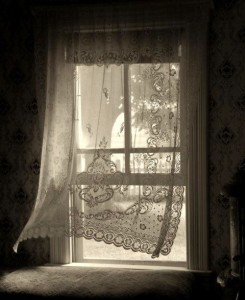



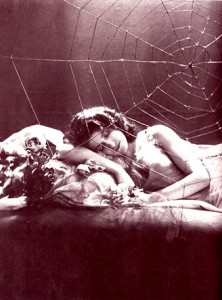

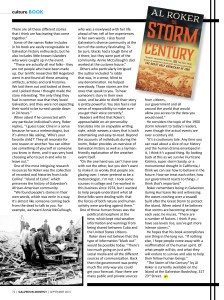
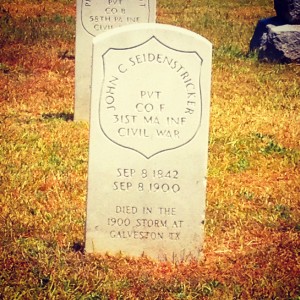
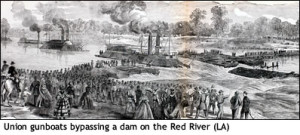 From there, Johann took part in the Red River campaign and was engaged with loss at Sabine Cross Road on April 4, 1864. He re-enlisted during the winter and left on July 21 for furlough in Massachusetts, returning to Donaldsonville in November.
From there, Johann took part in the Red River campaign and was engaged with loss at Sabine Cross Road on April 4, 1864. He re-enlisted during the winter and left on July 21 for furlough in Massachusetts, returning to Donaldsonville in November. While in New Orleans he met NOLA native Married Elenora Johanna Phillippi (1842-1906). They married on September 10, 1866 at St. Matthew’s Evangelical Church in Carrollton, Louisiana.
While in New Orleans he met NOLA native Married Elenora Johanna Phillippi (1842-1906). They married on September 10, 1866 at St. Matthew’s Evangelical Church in Carrollton, Louisiana.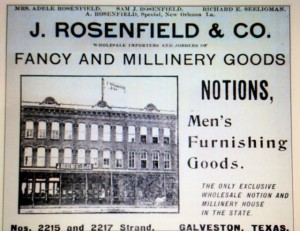
 On September 8, 1900 a hurricane which is still the nation’s worst natural disaster struck the city, smashing buildings and killing thousands of people. John was one of those lost in the tragedy. It was the day after his birthday.
On September 8, 1900 a hurricane which is still the nation’s worst natural disaster struck the city, smashing buildings and killing thousands of people. John was one of those lost in the tragedy. It was the day after his birthday.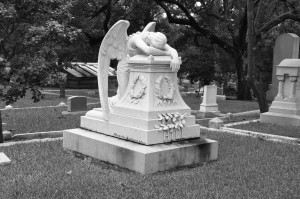
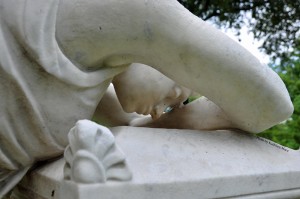 Glenwood’s angel is one of five of these mournful creatures that can be found in Texas.
Glenwood’s angel is one of five of these mournful creatures that can be found in Texas.
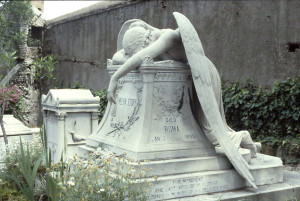 These five Texas angels, as well as others across the world, are based upon the “Angel of Grief,” a 1894 sculpture by William Wetmore Story. It serves as the grave marker of the artist and his wife at the Protestant Cemetery in Rome, Italy.
These five Texas angels, as well as others across the world, are based upon the “Angel of Grief,” a 1894 sculpture by William Wetmore Story. It serves as the grave marker of the artist and his wife at the Protestant Cemetery in Rome, Italy.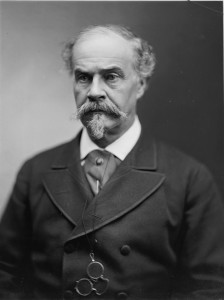
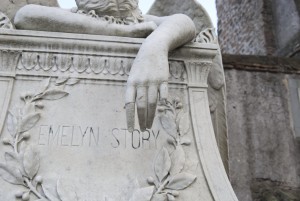
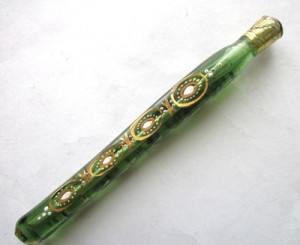
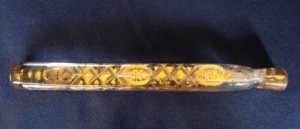 else related to mourning, they regained popularity during Victorian times. Tears were gathered in the bottles and saved by the mourners. Specially designed
else related to mourning, they regained popularity during Victorian times. Tears were gathered in the bottles and saved by the mourners. Specially designed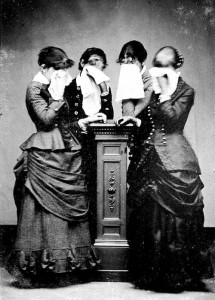 stoppers allowed the tears to slowly evaporate. When the moisture disappeared from the bottle, it could be taken as a sign that the mourning period had ended – a much more forgiving timeline than most mourning traditions of the day.
stoppers allowed the tears to slowly evaporate. When the moisture disappeared from the bottle, it could be taken as a sign that the mourning period had ended – a much more forgiving timeline than most mourning traditions of the day. American Civil War, soldiers sometimes gifted their wives and loved ones with tear bottles to fill while they were away. It was seen as a way to prove to a returning warrior that they had been dearly missed. Too often, though, the intended recipient never came home.
American Civil War, soldiers sometimes gifted their wives and loved ones with tear bottles to fill while they were away. It was seen as a way to prove to a returning warrior that they had been dearly missed. Too often, though, the intended recipient never came home.
